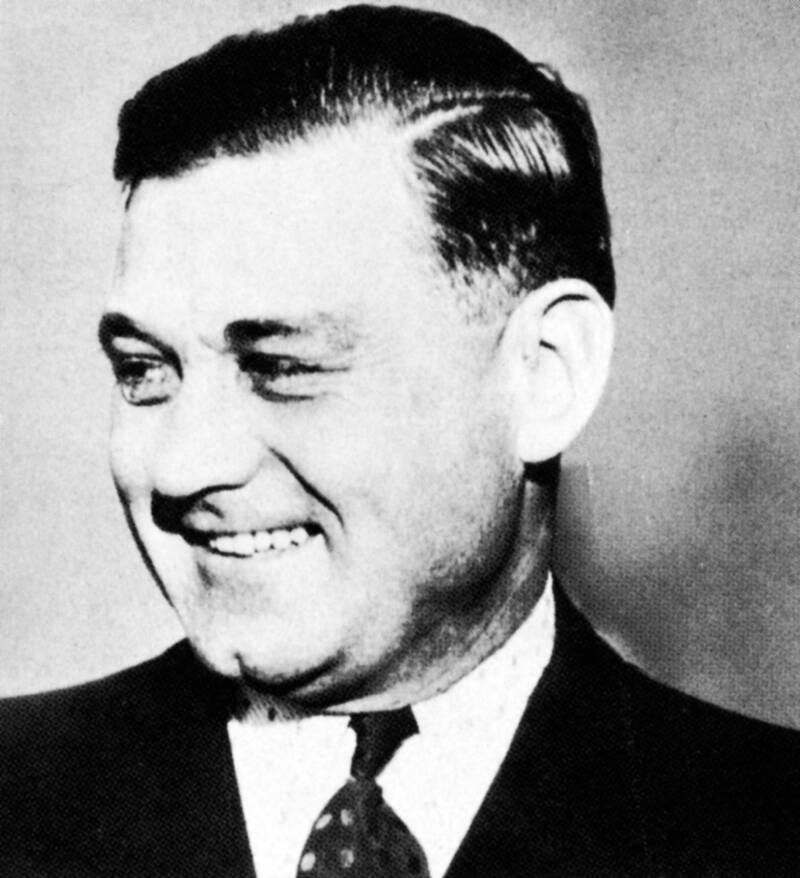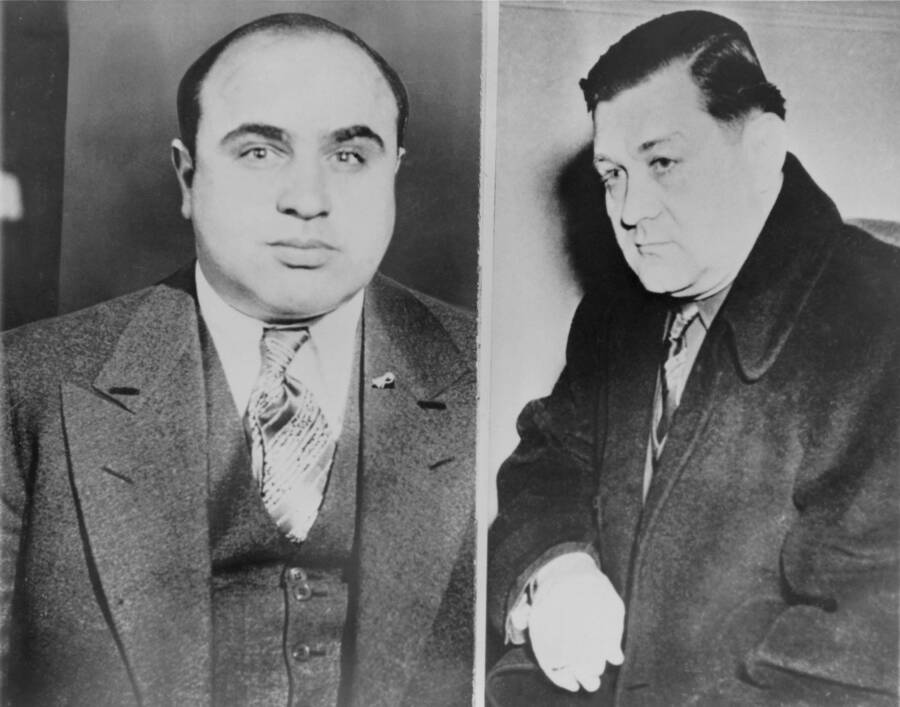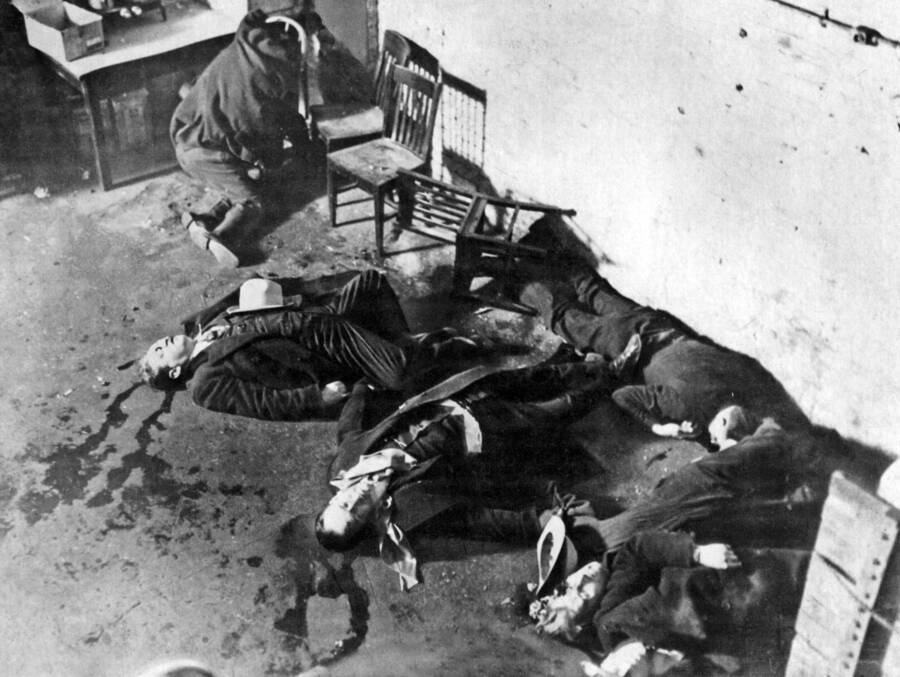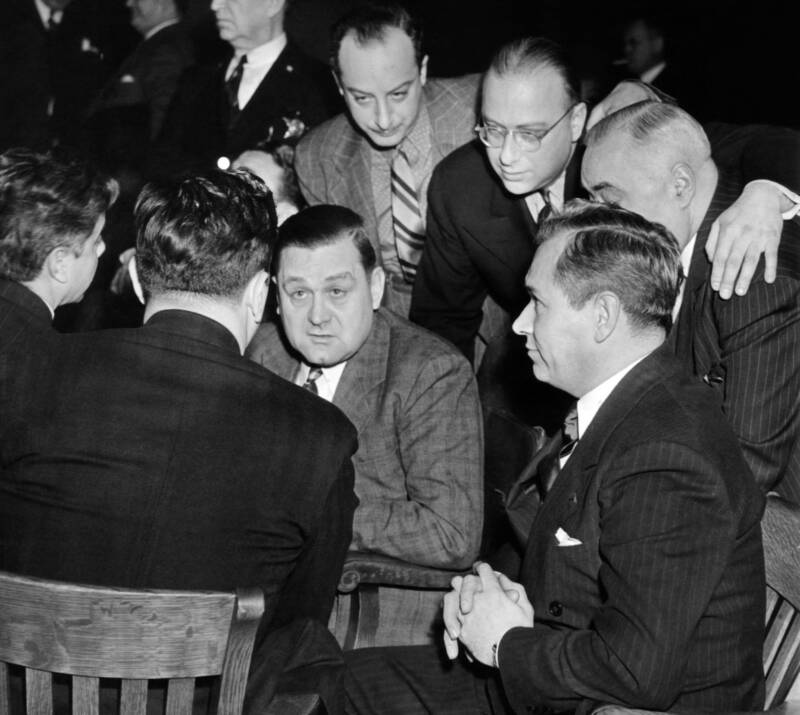It's believed that Bugs Moran was the intended target of the St. Valentine's Day Massacre — and that he only survived because he was running late to a meeting.

Lordprice Collection / Alamy Stock PhotoGeorge “Bugs” Moran was the leader of the North Side Gang in Chicago.
Al Capone may be the first name that comes to mind when talking about Prohibition-era Chicago, but he was far from the only gangster operating at the time. While other gangsters were waging wars in New York, Capone seemed to have Chicago mostly under his control — except for the North Side, which was largely controlled by a gang led by Capone’s rival, George “Bugs” Moran.
Both gangsters made a name for themselves through bootlegging operations, but they hated each other with a passion. Moran, who’d been raised Catholic, reportedly despised the fact that Capone ran a prostitution ring in Chicago’s South Side — something Moran refused to engage in, even though it would have brought in substantial profit.
The two rival gangsters engaged in a years-long turf war that culminated in the infamous St. Valentine’s Day Massacre of 1929, when seven members and affiliates of Moran’s gang were violently killed in a garage — supposedly on Capone’s orders.
But just who was Bugs Moran? While his name might not be as well known as Capone’s, Moran certainly left his mark on Chicago.
Incarcerated Three Times Before His 21st Birthday
Born in Saint Paul, Minnesota on August 21, 1891, George Moran’s early life wasn’t what one would expect of such a prominent criminal. For starters, George Moran wasn’t even his given name — it was Adelard Leo Cunin. He was the son of a French mason named Jules Cunin and a Canadian immigrant named Marie Diana Gobeil.
Jules Cunin had an explosive temper. As a result, he and his son often clashed. And it soon became clear that young Adelard had inherited his father’s aggressive temperament.
Moran attended Creighton, a Catholic high school in St. Paul, but he never graduated. Instead, by 18, he had left school and run away to Chicago. There, he got involved with a juvenile gang, operating a racket looting warehouses along the Chicago river.
Eventually, they got busted. That’s when young Adelard Cunin first adopted the name George Moran; it was the first name he thought of when police asked him who he was.

Everett Collection Historical / Alamy Stock PhotoGeorge “Bugs” Moran’s Catholic faith likely contributed to his hatred of Al Capone.
With his new persona, Moran delved even further into crime, mostly burglary and larceny. Before he was even 21 years old, he had been incarcerated three times.
Then, Prohibition set in in 1920. And like other prominent gangsters of his era, Moran saw a golden opportunity — and established himself as a force to be reckoned with.
Bugs Moran’s Rise To Prominence During Prohibition
Not long after Prohibition began, mobsters capitalized on the demand for liquor by establishing countless bootlegging operations across the country, bringing in booze from outside of the United States and re-selling it in underground speakeasies or direct to their consumers.
This line of work made the heads of these operations millions of dollars. And when that kind of money is involved, competition is bound to be intense.
Moran had established himself with the North Side Gang in Chicago, teaming up with other notable gangsters like Dean O’Banion, Vincent Drucci, and Hymie Weiss. The gang was comprised mostly of Irishmen or those of Irish descent. This also meant that there were a lot of Catholics among the ranks.
But Chicago had another prominent gang known as the South Side Gang, or the Chicago Outfit. And it was run by the infamous gangster, Al Capone.
The Chicago Turf War
Al Capone was a member of the Italian mob that also controlled much of New York City. And although he, like Moran, was born into a Catholic family, he didn’t limit his operation to bootlegging.

Everett Collection Inc / Alamy Stock PhotoAl Capone and his rival, Bugs Moran.
Capone’s gang also ran a prostitution ring, which drew the ire of Moran and other Catholic North Side gangsters, adding further tension between the two gangs which were already competing for control over Chicago’s bootlegging operations.
Things turned violent quickly, and escalated when the South Side Gang murdered Moran’s friend and mentor, Dean O’Banion. In response, Moran and Hymie Weiss tried unsuccessfully to have Johnny Torrio, one of the South Side Gang leaders, killed.
Later, on Sept. 20, 1926, Moran and other North Side Gang members tried to kill Capone, too, firing at him more than 1,000 times while he was at the Hawthorne Inn in Cicero, Illinois.
Naturally, Capone didn’t let that slide. His gang took Weiss out of the picture shortly after, leaving Moran and Vincent Drucci in charge of the North Side Gang. The following year, Drucci was killed by a Chicago detective, making Moran the gang’s sole leader.
As Capone and Moran continued to wage their violent turf war, the death tally rose on both sides. By February 1929, Moran had put a $50,000 bounty on Capone’s head.
Then, on Feb. 14, 1929, Al Capone set out to prove that he was done messing around.
Bugs Moran Narrowly Avoids Death During The St. Valentine’s Day Massacre
In February 1929, Bugs Moran received word that a seller was looking to offload a massive supply of Canadian whiskey on the cheap. So on Valentine’s Day, Moran sent seven of his men to pick up the delivery at a garage he owned on North Clark Street.
There, they were greeted by four strangers — two of whom were dressed as police officers. The intruders ordered Moran’s men to line up against a wall, and the North Siders, likely believing it was a police raid, complied.
Then, the four intruders unloaded a hail of bullets on Moran’s gangsters. It was just after 10:30 in the morning, and Moran’s men lay dead in a cold Chicago garage, their suits and skin stained with blood.

Pictorial Press Ltd / Alamy Stock PhotoThe aftermath of the St. Valentine’s Day Massacre.
The event became known as the St. Valentine’s Day Massacre — and many believe Bugs Moran had been the intended target. Notably, one of the victims, Albert Weinshank, looked like Moran. It’s possible that the assailants had mistaken him for the gangster.
And although it was never officially confirmed, it’s generally believed that Al Capone ordered the attack. Moran himself was convinced that Capone was behind it.
“Only Capone kills like that!” he said after the massacre, as reported in Rose Keefe’s book The Man Who Got Away: The Bugs Moran Story.
Capone was in Florida at the time, but his power and influence made things like borders between states trivial. He would have known where to find Moran. In fact, Moran was supposed to have been at the garage that fateful day. Fortunately for him, he’d simply been running late to the meeting.
Had he been on time that morning, he likely would have met an early, gruesome end. Instead, he lived — only to be arrested for robbery much later and die in obscurity.
Arrest And Final Years
Bugs Moran, like most other gangsters of his time, had his hands in a lot of things. Any one of them could have proven to be his downfall — murder, bootlegging, theft. But it would ultimately be a robbery that finally landed Moran behind bars.
As the Dayton Daily News reported, the FBI had been on Moran’s tail for months leading up to a bank robbery in Dayton, Ohio in 1946.

Everett Collection Historical / Alamy Stock PhotoGeorge ‘Bugs’ Moran on trial for forgery in 1939.
He and his accomplices were sentenced to 10 years in prison each, after jurors reached a unanimous decision in just 92 minutes.
By the time Moran got out in 1956, he was completely broke. His wife had reportedly abandoned him. And eventually, people fell out of interest with Moran. He returned to the world a free man with no money, no wife, and nothing to fall back on.
Shortly after his release, he was arrested again for a 1945 robbery and sent back to prison. He ultimately died of lung cancer while still behind bars on Feb. 25, 1957.
After reading about Chicago gangster George “Bugs” Moran, read the story of George “Machine Gun” Kelly, Prohibition’s most trigger happy gangster. Then, read about Legs Diamond, the Prohibition-era gangster who was nearly impossible to kill.





